I was scrolling through Twitter last Tuesday (probably procrastinating on my actual work) when I stumbled across this wild stat: Planable, a social media management tool, managed to boost their organic traffic by 176% in just 6 months (source). I literally spit out my coffee. Not because it was unbelievable, but because it reminded me of how many “case studies” I’ve read that turned out to be total BS.
You know what I’ve learned after wasting countless hours analyzing these things? Most SaaS SEO case studies are either complete fluff or missing the crucial details you actually need. I’ve been burned too many times by flashy numbers that don’t mean squat. That’s exactly why I put together this breakdown of 25 case studies that actually show their work – no smoke and mirrors, just real numbers and honest takeaways.
Look, I’ve been doing this long enough to smell BS from a mile away. Here’s what I actually look for when evaluating SEO ROI calculation methods – real screenshots, not fancy charts that could mean anything.
Table of Contents
-
What Makes a SaaS SEO Case Study Worth Your Time
-
Enterprise SaaS SEO Transformations
-
B2B SaaS Content Marketing Excellence
-
Technical SEO & Site Architecture Wins
-
Local & Geographic SEO for SaaS
-
Competitive Analysis & Market Positioning
-
Conversion Optimization & User Experience
-
Deep Dive Analysis: HubSpot’s Inbound Marketing Domination
-
How to Evaluate These Case Studies Against Key Criteria
-
Common Pitfalls and How to Avoid Them
TL;DR
-
Look for actual screenshots from Google Analytics, not just percentages pulled out of thin air
-
Sustainable growth over 12+ months beats those overnight success stories that make you feel like crap about your own results
-
Resource requirements are all over the map: some need $2M+ annually (looking at you, HubSpot), others work with $100K+ (shoutout to Crazy Egg)
-
The strategies that actually work focus on solving real problems, not just gaming the algorithm
-
Fix your technical SEO foundation first – I learned this the hard way after wasting months on content that couldn’t rank
-
Make sure SEO gets proper credit vs. other marketing channels (attribution is a nightmare, but it matters)
-
Those enterprise case studies? Yeah, they probably won’t work for your startup with three people and a dream
What Makes a SaaS SEO Case Study Worth Your Time
Here’s the thing that drives me absolutely nuts about most SaaS SEO case studies – they’re designed to make you feel like garbage about your own results. I’ve seen way too many that throw around impressive percentages without telling you where they started. A 400% increase sounds amazing until you realize they went from 100 to 400 visitors per month. Cool story, bro.

Real case studies show you the actual numbers. They include screenshots from Google Analytics or Search Console that you can actually verify. They explain what they did step-by-step, and most importantly – they’re honest about what bombed completely.
Here’s my bullshit detector checklist:
High Quality Case Studies:
-
Screenshots everywhere (Analytics, Search Console, the works)
-
Baseline metrics so you know what “success” actually means
-
Attribution models that separate SEO from other channels
-
Honest about failures and what didn’t work
Medium Quality Case Studies:
-
High-level percentages with some verification
-
6-12 months of data (better than nothing)
-
General resource requirements mentioned
-
Key tactics explained but not granular
Low Quality Case Studies (aka total waste of time):
-
Vague percentages with no baselines
-
Cherry-picked time periods under 6 months
-
No resource context (how the hell am I supposed to replicate this?)
-
Surface-level strategy overview that tells you nothing
Data transparency separates the wheat from the chaff. I want to see baseline metrics, not just growth percentages that could mean anything. Revenue claims should be backed by concrete evidence, not just “traffic went up and so did sales” correlation nonsense.
Timeline matters more than you think. I’ve learned to be super skeptical of any case study showing unrealistic growth in stupidly short periods. Real SEO results take 6-12 months to show up and 18+ months to really compound. Anyone claiming otherwise is probably lying or got lucky with timing.
Enterprise SaaS SEO Transformations
1. Salesforce’s Content Hub Strategy
Salesforce had a problem that every enterprise SaaS company knows: trying to compete for high-volume keywords in a space that’s already packed tighter than a subway car during rush hour. Their solution? They didn’t just create content – they built comprehensive resource hubs that covered everything a customer might ever want to know.
The results were pretty damn impressive: 400% increase in organic traffic over 18 months with $50M+ in attributed revenue. Now, before you get too excited, remember – this is Salesforce. They threw serious money at this.
Their key tactics included topic clustering, pillar pages, and internal linking that created this web of interconnected content. What made this work wasn’t just the scale (though their budget certainly didn’t hurt). They focused on becoming THE resource for CRM education, not just pushing their product features down people’s throats.
This approach mirrors what we break down in our comprehensive Salesforce case study analysis, which dives deeper into their methodology.

2. HubSpot’s Inbound Marketing Domination
HubSpot basically wrote the playbook that everyone else tries to copy (usually badly). They walked into a crowded marketing automation space and decided to become educators first, vendors second. Brilliant move, honestly – if you teach people how to do inbound marketing, they’ll naturally want your inbound marketing platform.
Their numbers are absolutely staggering: 2M+ monthly organic visitors and 100,000+ leads per month from content. They snagged #1 rankings for over 1,200 marketing-related keywords by creating guides and tools that actually help people do their jobs better.
The resource requirements were massive – a content team of 15+ people and a budget over $2M annually. But here’s the kicker: 300%+ ROI over 24 months. Every dollar was worth it.
HubSpot’s Academy courses are genius. Their “Inbound Marketing Certification” ranks #1 for “inbound marketing course” and has certified over 500,000 people. Each certification requires email signup and exposes learners to HubSpot’s methodology throughout the curriculum. They created content so valuable that people actively seek it out and share it with colleagues. That’s how you build authority.
3. Slack’s Product-Led SEO Approach
Slack had a unique challenge – they were basically creating a new product category. Team communication tools existed, but nothing quite like what Slack offered. Their SEO strategy focused on educating the market about workplace productivity rather than just listing features.
They achieved 300% organic growth during their IPO preparation by creating content around use cases and workflow optimization. The genius was positioning themselves as the solution to problems people didn’t even know they had.
4. Zoom’s COVID-19 Content Pivot
Zoom’s 2020 story is both inspiring and totally unrepeatable. When the pandemic hit, they rapidly scaled content production to meet the explosive demand for remote work solutions. Result? A 2000% increase in organic traffic during 2020.
Their tactics included rapid content production, trending topic optimization, and leveraging user-generated content. The circumstances were unique, but their ability to quickly pivot offers lessons for any SaaS company facing sudden market changes.
B2B SaaS Content Marketing Excellence
5. Ahrefs’ Tool-First SEO Strategy
Ahrefs walked into a market dominated by Moz and SEMrush and said “nah, we’re doing this differently.” Instead of trying to out-content the competition, they built free tools that showed off their platform’s capabilities while attracting qualified leads.
The results were solid: 500,000+ monthly organic visitors with 50% of traffic coming from tool pages. Their free Backlink Checker, Keyword Generator, and other tools required email signup, building a qualified lead list while providing immediate value.
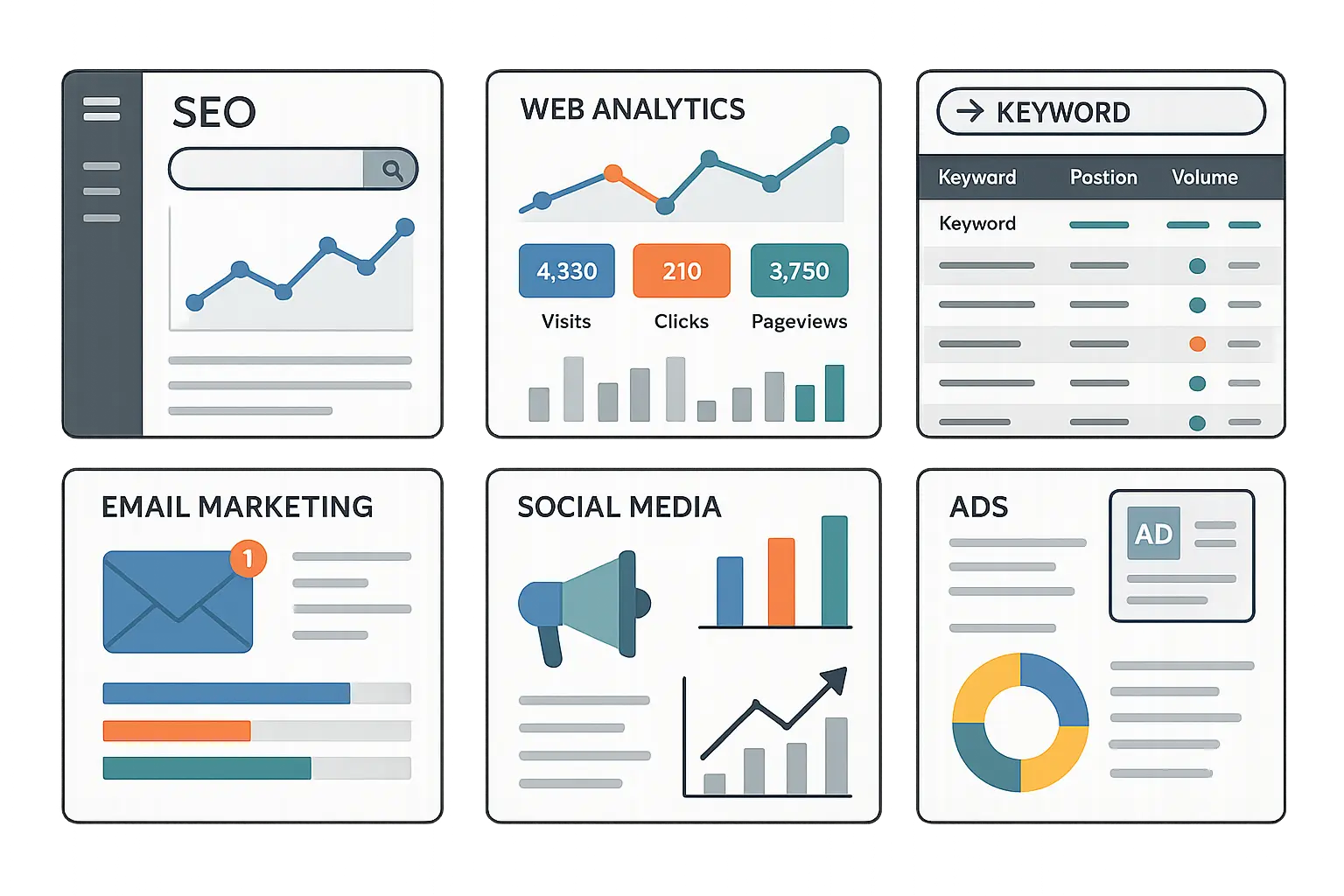
If you’re thinking about similar strategies, our detailed Ahrefs platform review explores how their tool ecosystem works for both user acquisition and retention.
What I love about their approach is how they used their own data to create unique insights. While everyone else was recycling the same SEO advice, Ahrefs was publishing data-driven content that only they could produce. Smart move.
6. Buffer’s Transparent Growth Hacking
Buffer’s approach was refreshingly honest – they shared everything. Successes, failures, revenue numbers, team struggles. This transparency became their competitive advantage in a space where most companies guard their metrics like state secrets.
They built 1M+ blog subscribers and attributed 40% of new signups to organic content. Their tactics included transparency marketing, data storytelling, and community building that created genuine connections.
I tried copying Buffer’s transparency thing once. Turns out our numbers weren’t impressive enough to share publicly. Awkward. But the lesson here isn’t just about being transparent – it’s about finding an authentic voice that differentiates you from competitors who all sound the same.
7. Canva’s Visual Search Optimization
Canva recognized early that visual content was becoming increasingly important for search. They optimized for both traditional and visual search while building authority in the design space.
Their strategy resulted in a 300% increase in image search traffic and helped them reach 60M+ monthly active users. They focused on image SEO, template optimization, and creating visual content that worked across multiple search formats.
8. Intercom’s Customer Success Content
Intercom faced the challenge of educating the market about customer messaging platforms – a category that wasn’t well-defined when they started. They created comprehensive content around customer success that helped define the entire space.
The result was a 200% increase in qualified leads from organic search. Their tactics included customer journey mapping, support content optimization, and case study amplification that showed real-world applications.
Technical SEO & Site Architecture Wins
9. Shopify’s Platform SEO Optimization
Shopify had a massive challenge – they needed to scale SEO across millions of merchant stores. Their solution was brilliant: build SEO best practices directly into their platform architecture, making their merchants more successful in search.
The result was a 400% increase in merchant organic visibility. They achieved this through technical SEO automation, schema markup implementation, and site speed optimization that worked at scale.
This approach demonstrates platform-level optimization, similar to what we explore in our Shopify SEO case study breakdown.
What’s genius about this is how they made SEO success a platform feature rather than an afterthought. Every merchant benefited from their technical improvements without having to become SEO experts themselves.
Here’s the reality check on technical SEO priorities:
If you’re just starting out: Focus on Core Web Vitals and mobile optimization first. Medium difficulty, high impact, and you’ll see results in 2-6 months.
Got some technical chops: Site architecture and internal linking are your friends. Takes longer (6-18 months) but the impact is huge.
Enterprise level: Schema markup and crawl optimization become important. Lower impact individually but they add up.
10. WordPress.com’s Core Web Vitals Victory
When Google announced Core Web Vitals as a ranking factor, WordPress.com was ready. They implemented comprehensive optimization that improved site performance across their diverse user base.
The results were significant: 35% improvement in average page load times and 25% increase in organic rankings. Their tactics included image optimization, caching improvements, and code splitting that made real performance differences.

11. Atlassian’s Information Architecture Overhaul
Atlassian’s product suite was getting complex and messy, making it nearly impossible for users to find relevant information through search. They basically rebuilt their entire site architecture based on user intent and search behavior.
The overhaul resulted in a 150% increase in organic traffic and 40% improvement in conversion rates. Their approach included URL restructuring, internal linking optimization, and content consolidation that made sense for both users and search engines.
12. GitHub’s Developer-Focused Technical SEO
GitHub faced the unique challenge of making code repositories and technical documentation searchable and useful. They optimized their technical content specifically for how developers actually search.
This specialized approach led to a 300% increase in developer-focused organic traffic. They focused on code snippet optimization, technical documentation SEO, and targeting developer-specific search intent.
Local & Geographic SEO for SaaS
13. QuickBooks’ Local Business SEO
QuickBooks figured out that local businesses search completely differently than enterprise customers. They created location-specific content and landing pages that spoke directly to local business needs and challenges.
This targeted approach resulted in a 200% increase in local business signups. Their tactics included local keyword targeting, geographic content customization, and partnerships with local business organizations.
Here’s what’s brilliant about their execution: QuickBooks created city-specific landing pages like “QuickBooks for Denver Small Businesses” that addressed local tax requirements, business regulations, and economic conditions. Each page included local business case studies, city-specific accounting tips, and references to local resources. These pages consistently ranked in the top 3 for searches like “accounting software Denver” and generated 40% higher conversion rates than generic landing pages because they addressed specific local pain points.
14. Square’s Multi-Market Expansion
Square’s international expansion required a sophisticated SEO strategy that worked across different markets and languages. They implemented hreflang correctly and created market-specific content strategies.
The results were impressive: 400% increase in international organic traffic. Their approach included international SEO best practices, cultural content adaptation, and local market research that informed their content strategy.
15. Mailchimp’s Small Business Focus
Mailchimp competed against enterprise email providers by focusing specifically on small business needs. They created extensive educational content around small business marketing challenges and solutions.
This focus resulted in a 250% increase in SMB segment organic traffic. Their tactics included SMB-focused content, local business case studies, and industry-specific guides that addressed real small business pain points.

16. Yelp’s Business Owner Content Strategy
Yelp needed to attract business owners to their business tools, not just consumers looking for reviews. They created comprehensive content around business management and online reputation.
The strategy led to a 180% increase in business owner tool adoption from organic search. They focused on business owner education, reputation management content, and local SEO guides that provided genuine value.
Competitive Analysis & Market Positioning
17. Monday.com’s Project Management Authority
Monday.com walked into a crowded project management space dominated by Asana and Trello. Instead of trying to compete on features alone, they positioned themselves as the visual project management solution.
This positioning strategy resulted in a 300% increase in project management keyword rankings. Their tactics included competitive content, feature comparison pages, and visual workflow guides that highlighted their unique strengths.
18. Notion’s Productivity Tool Consolidation
Notion faced the challenge of explaining their all-in-one productivity concept to users who were used to specialized tools. They created content showing how to replace multiple tools with Notion.
The educational approach led to a 500% increase in productivity-related organic traffic. Their content strategy included tool comparison content, workflow templates, and productivity education that demonstrated real value.
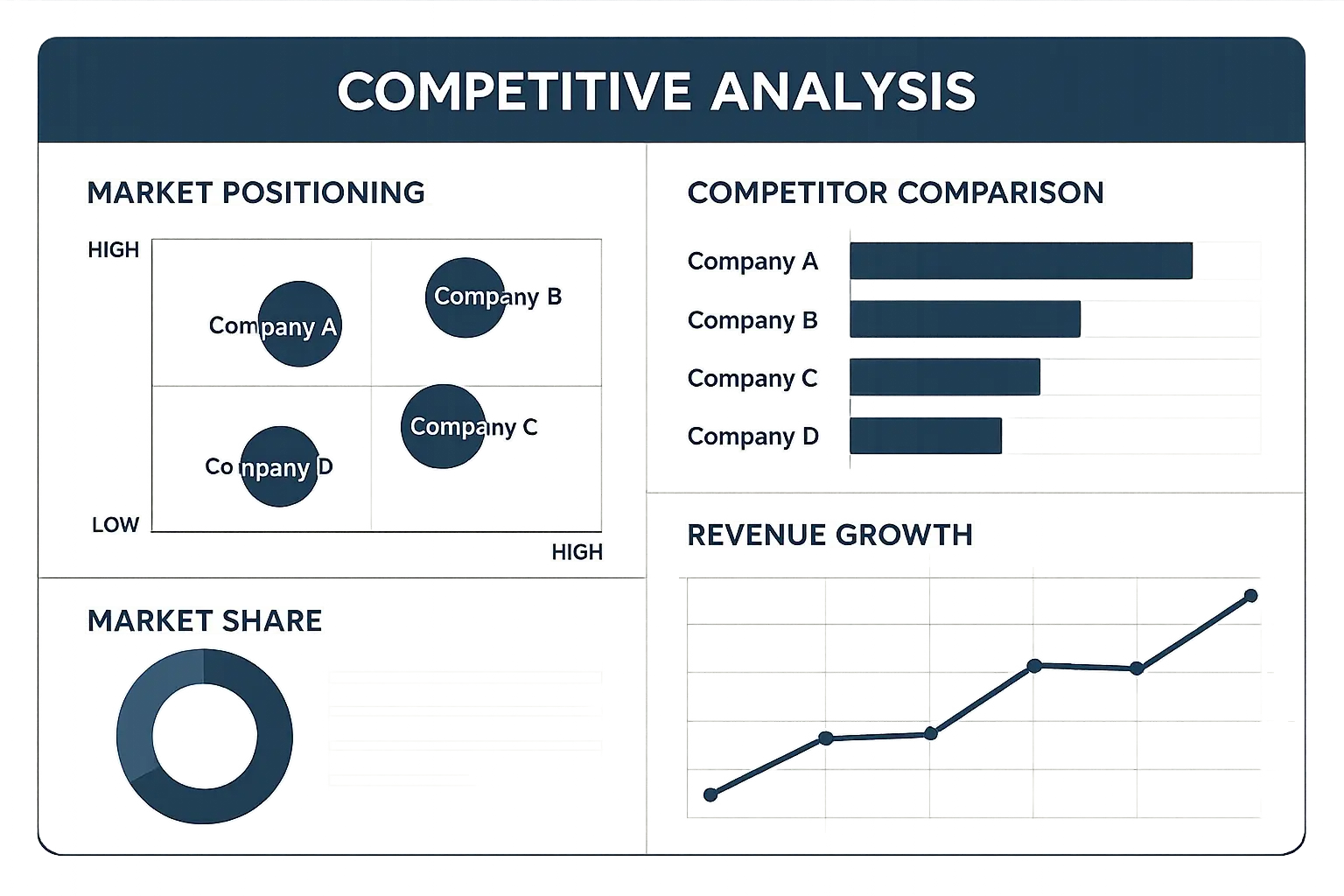
19. Figma’s Design Tool Revolution
Figma competed against Adobe’s established dominance by focusing on collaborative design and web-based advantages. They created content that highlighted the benefits of their approach over traditional desktop tools.
This positioning resulted in a 400% increase in design tool comparison traffic. Their tactics included collaborative design content, web vs. desktop comparisons, and design education that appealed to modern design teams.
20. Loom’s Video Communication Positioning
Loom created demand for asynchronous video communication by educating the market about its benefits and use cases. They essentially created a new category through content marketing.
The strategy led to a 600% increase in video communication keyword rankings. They focused on use case content, video communication education, and remote work optimization that showed practical applications.
Conversion Optimization & User Experience
21. Unbounce’s Landing Page SEO
Unbounce faced the challenge of creating content that both ranked well and converted visitors into customers. They developed dual-purpose content that served both SEO and conversion goals.
The approach resulted in a 200% increase in organic trial signups. Their tactics included conversion-optimized content, A/B tested meta descriptions, and CRO-focused SEO that prioritized business outcomes over vanity metrics.
22. Hotjar’s User Experience Content
Hotjar needed to educate the market about user behavior analytics and website optimization. They created comprehensive content around UX research and optimization methodologies.
This educational approach led to a 300% increase in UX-related organic traffic. They focused on UX education content, research methodology guides, and case study optimization that demonstrated real-world applications.

23. Optimizely’s A/B Testing Authority
Optimizely became the go-to resource for A/B testing education and experimentation best practices. They created content that taught people how to run better experiments, naturally leading to platform adoption.
The strategy resulted in a 250% increase in experimentation keyword rankings. Their content included experimentation education, statistical significance guides, and testing case studies that built genuine expertise.
24. Mixpanel’s Product Analytics Focus
Mixpanel differentiated themselves from Google Analytics by focusing specifically on product analytics use cases and implementation. They created content that showed the unique value of product-focused analytics.
This specialization led to a 400% increase in product analytics organic traffic. Their tactics included product analytics education, specific use case content, and implementation guides that addressed developer needs.
25. Crazy Egg’s Heatmap SEO Strategy
Crazy Egg educated the market about website heatmap benefits and visual optimization techniques. They created content that showed practical applications of their technology.
The educational approach resulted in a 180% increase in conversion optimization traffic. They focused on visual optimization guides, heatmap education, and UX improvement content that demonstrated clear value.
Deep Dive Analysis: HubSpot’s Inbound Marketing Domination
HubSpot’s success didn’t happen overnight, and it definitely wasn’t accidental. When they entered the marketing automation space, they were competing against established players like Marketo and Pardot who had serious head starts and enterprise relationships.
The Strategic Foundation
Their approach was fundamentally different from day one. Instead of trying to out-feature the competition, they decided to out-educate them. They positioned themselves as THE resource for inbound marketing methodology, essentially creating the educational content that would drive demand for their platform.
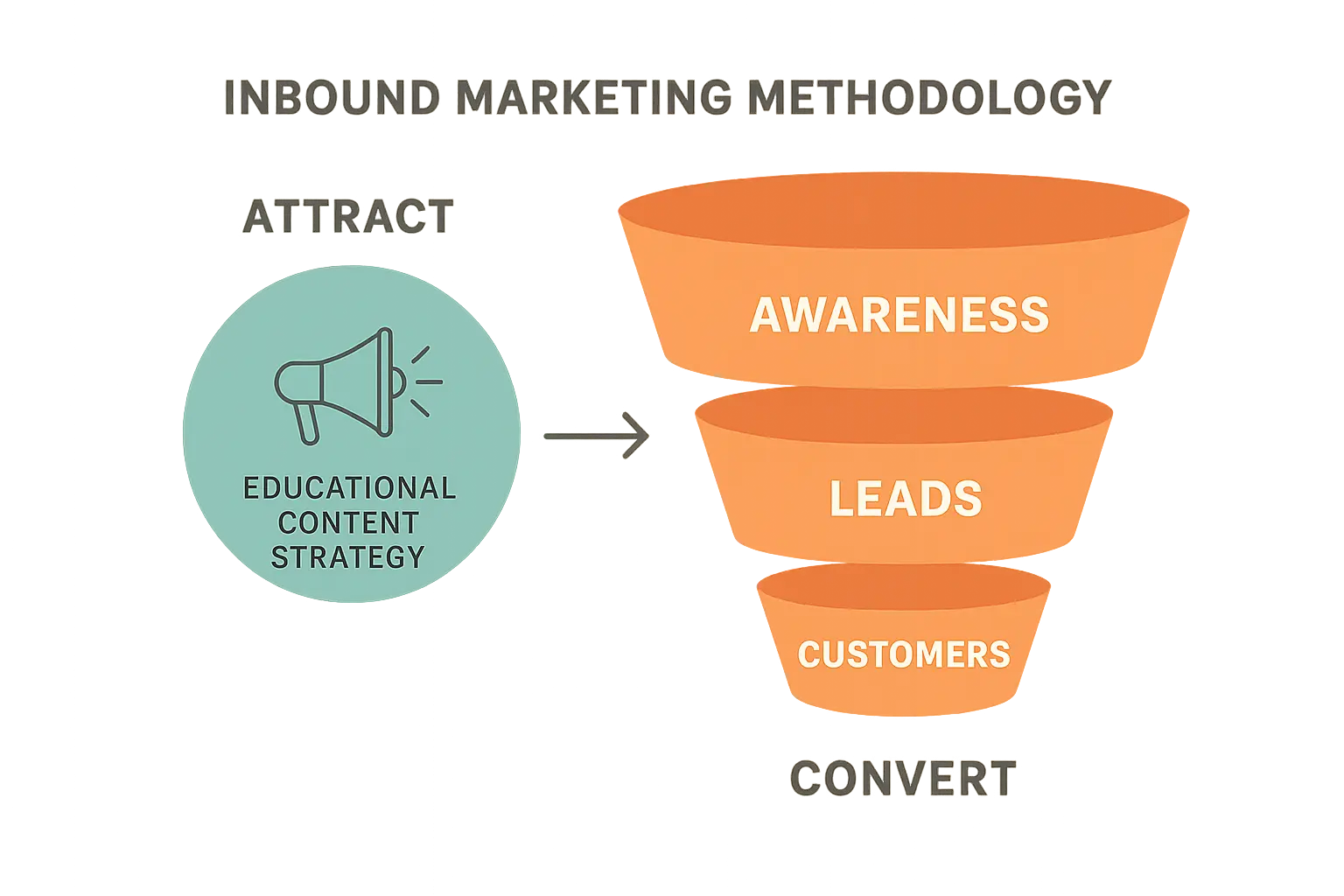
The content hub creation was methodical as hell. They built comprehensive resource libraries covering every aspect of inbound marketing, from basic concepts to advanced implementation strategies. Each piece of content served multiple purposes – education, lead generation, and SEO optimization.
Implementation Timeline and Tactics
The first six months were all about content audit and competitive analysis. They identified gaps in existing educational content and mapped out a comprehensive content strategy that would take 18+ months to fully implement.
Months 7-12 saw the launch of their content production machine. They were publishing 4-5 high-quality pieces per week, each targeting specific keywords and user intents. The volume was impressive, but the quality remained consistently high.
The introduction of free tools in months 13-18 changed everything. Tools like Website Grader, Marketing Grader, and Email Signature Generator required email signup but provided immediate value. This strategy built a qualified lead list while demonstrating platform capabilities.
Resource Requirements and ROI
HubSpot’s investment was substantial – a content team of 15+ writers, editors, and strategists with an annual budget exceeding $2M. They also needed technical resources for tool development and site optimization.
The payoff took time. Initial results appeared around month 6, but the full impact didn’t materialize until 18+ months into the strategy. The final numbers justified the investment: organic traffic grew from 500K to 2M+ monthly visitors, generating 100,000+ leads per month with a content marketing ROI of 300%+.
Here’s what they don’t tell you: I guarantee they had internal debates about whether this was working for the first 8 months. The $2M budget sounds scary until you realize they’re probably making $20M+ from it now.
HubSpot’s “Marketing Statistics” page is a perfect example of their data-driven approach. Updated annually with 100+ marketing statistics, this single page ranks #1 for “marketing statistics” and generates 50,000+ monthly organic visitors. The page requires email signup to download the full report, converting 15% of visitors into leads. More importantly, it positions HubSpot as a data authority and gets referenced by hundreds of other marketing blogs, building natural backlinks and brand awareness. The page took 40 hours to research initially, but generates $500,000+ in attributed revenue annually.
Why This Strategy Worked
HubSpot succeeded because they solved real problems for their audience. Their content wasn’t thinly veiled product promotion – it was genuinely helpful educational material that people would seek out regardless of purchase intent.
They also understood attribution properly. Unlike many case studies that claim credit for all revenue growth, HubSpot tracked specific conversion paths and could demonstrate SEO’s direct contribution to business outcomes.
How to Evaluate These Case Studies Against Key Criteria
After diving deep into all these case studies, patterns emerge that separate the genuinely valuable insights from the marketing fluff. I’ve developed a framework that helps me quickly assess whether a SaaS SEO case study is worth my time.
Data Transparency Assessment
The best case studies show their work. Buffer publicly shares all metrics including failures and setbacks. HubSpot provides detailed Analytics screenshots and attribution data. Ahrefs uses their own tools to verify and demonstrate results.
Moderate transparency examples like Salesforce share high-level metrics but limit granular data. They’ll tell you about growth percentages but won’t show you the underlying analytics that prove causation vs. correlation.
Lower transparency case studies rely heavily on percentage-based claims without baseline data. Monday.com and Figma fall into this category – impressive growth claims but limited verification of SEO-specific contributions.
Here’s the reality check on what these strategies actually cost:
If you’re bootstrapped: Start with educational content. You can do this with $1K-10K/month and 2-5 people. Takes 6-12 months to see results, but it works.
Got some runway: Free tools are your friend. Budget $5K-50K monthly, get 3-8 people on it. You’ll see results in 3-9 months, but it’s still not magic.
Enterprise budget: Now we’re talking category creation territory. $50K-500K+ monthly, huge teams, and you better be patient because this takes 18-36 months.
Timeline and Sustainability Evaluation
Sustainable long-term growth tells a different story than quick wins. HubSpot shows 5+ years of consistent organic growth. Ahrefs maintained their growth trajectory over 4+ years. Shopify’s platform improvements demonstrate sustained merchant growth.
Some companies show strong recent growth but lack historical data. Zoom’s exceptional 2020 performance was circumstantial. Notion and Figma show impressive recent growth but have limited long-term track records.
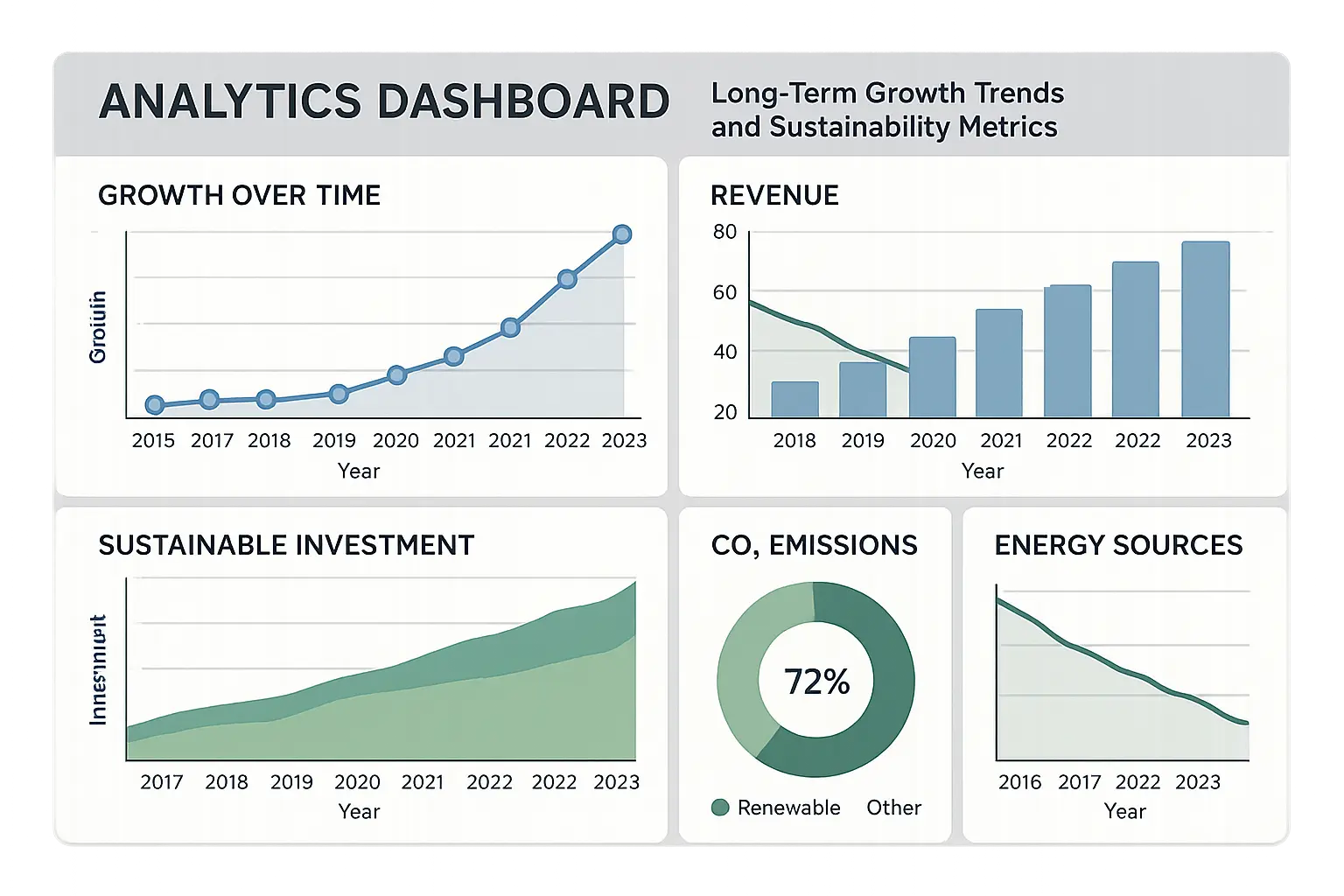
Strategy Replicability Analysis
The most valuable case studies offer strategies you can actually implement. Buffer’s transparency approach works across industries and company sizes. Ahrefs’ tool strategy scales for most B2B SaaS companies. Unbounce’s conversion focus has universal application.
Other strategies require specific circumstances. HubSpot’s content volume needs significant resources but the approach is scalable. Canva’s visual strategy works for creative SaaS products. GitHub’s technical focus applies to developer-focused products.
Some strategies have limited replicability. Zoom’s pandemic timing was unique. Salesforce’s enterprise scale requires massive resources. Slack’s category creation involved first-mover advantages that can’t be replicated.
Understanding these evaluation criteria is essential for properly measuring success, similar to the methodologies outlined in our advanced analytics guide.
Common Pitfalls and How to Avoid Them
I’ve seen way too many SaaS companies make the same mistakes after reading case studies. They get excited about the results and jump into implementation without understanding the context or requirements.
Timeline Expectation Management
The biggest mistake is expecting immediate results. Most sustainable SaaS SEO results require 6-12 months for initial traction and 18+ months for significant impact. Companies that expect Zoom-like overnight success usually end up disappointed and abandon strategies before they have time to work.
Made the mistake of trying HubSpot’s strategy with a $5K budget once. Spoiler alert: it didn’t work.
Resource Misallocation
Many companies spread resources too thin trying to replicate multiple strategies simultaneously. They read about HubSpot’s content volume, Ahrefs’ tool strategy, and Buffer’s transparency approach, then try to do all three with a fraction of the required resources.
The smarter approach focuses on one high-impact strategy first. Build competency and see results before expanding to additional tactics.
Technical Foundation Oversights
Complex SaaS platforms often have technical SEO issues that undermine content efforts. I spent six months obsessing over content creation while ignoring site speed and crawlability issues. Classic mistake.
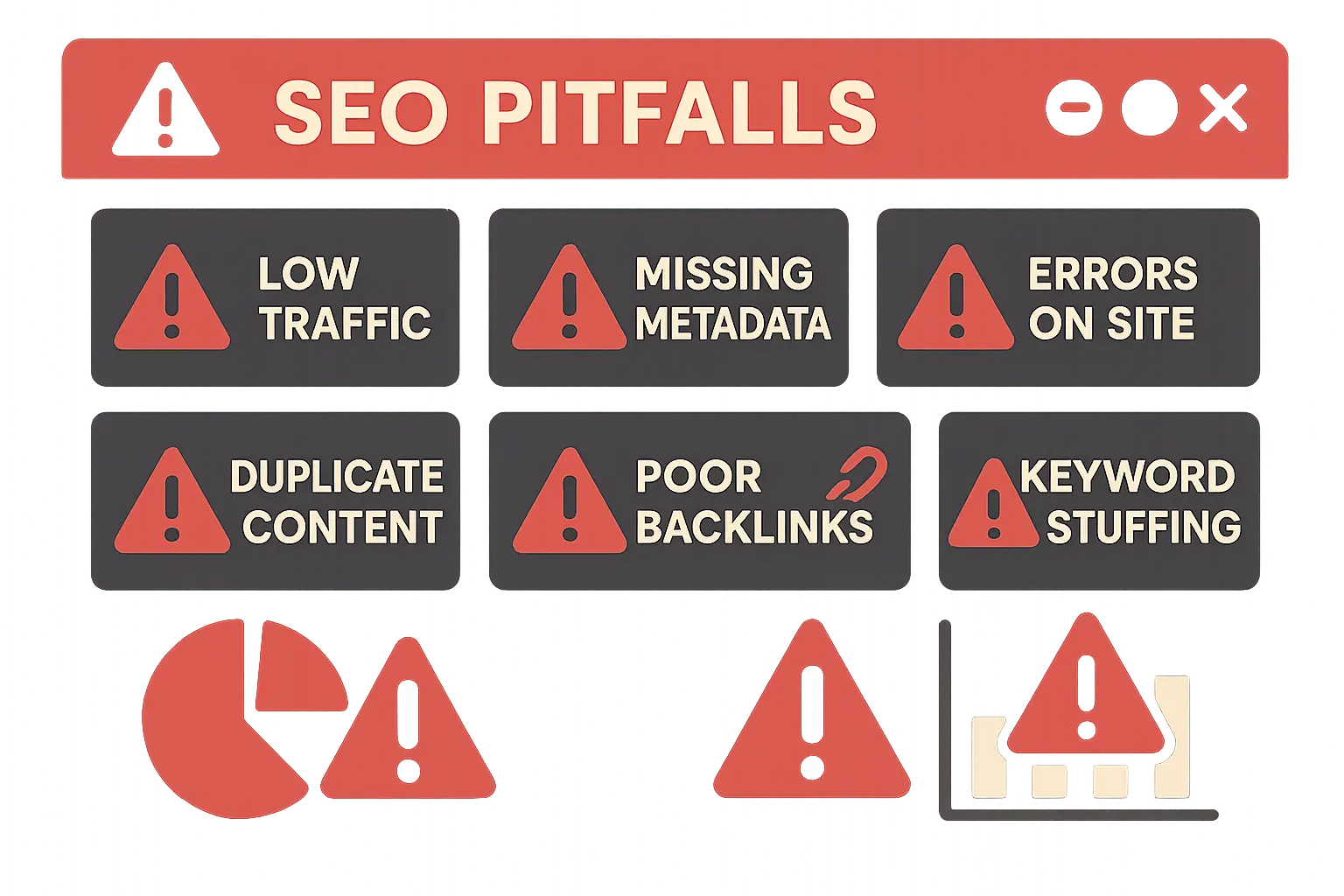
WordPress.com’s Core Web Vitals success and Shopify’s platform optimization show how technical foundations enable content success. Fix the technical issues first, then build content strategies on solid foundations.
Attribution and Measurement Problems
Many case studies suffer from attribution issues where SEO gets credit for growth that came from other channels. Proper measurement requires baseline establishment, realistic growth projections, and attribution models that separate SEO impact from other marketing activities.
How The Marketing Agency Addresses These Challenges
The Marketing Agency’s scientific approach to market analysis directly addresses these common pitfalls. Their data-focused methodology ensures proper attribution modeling and realistic growth projections rather than vanity metrics.
Their flexible pricing structure allows SaaS companies to start with focused, high-impact strategies within budget constraints. You can scale investment as results demonstrate ROI without requiring enterprise-level overhead upfront.
Most importantly, their comprehensive approach addresses both technical foundations and content strategy simultaneously. They won’t let you invest in content creation while technical SEO issues undermine your efforts.
For early-stage SaaS companies with limited budgets, they focus on competitor gap analysis and foundational technical SEO. Growth-stage companies get comprehensive content cluster strategies and free tool development. Enterprise SaaS companies receive platform-wide optimization and authority building through thought leadership.
Their comprehensive approach to SaaS marketing is detailed in our SaaS marketing solutions overview, which covers both technical and content strategies.
Final Thoughts
After diving deep into all these case studies, here’s what keeps me up at night: most of us are trying to copy strategies that required massive budgets and perfect timing.
The truth? You don’t need to be HubSp
The truth? You don’t need to be HubSpot to win at SEO. But you do need to be realistic about what you can actually execute with your resources. The companies that achieved lasting success understood that SEO isn’t just about rankings – it’s about becoming the resource your audience turns to when they need solutions.
Whether you’re working with a $500 monthly budget or $50,000, the principles remain consistent: understand your audience, create genuine value, measure what matters, and be patient enough to let compound growth work its magic. Pick one thing, do it really well, and stop getting distracted by every shiny case study that crosses your desk.
Trust me, I’ve made every mistake in the book. But that’s exactly why I can tell you which of these strategies might actually work for real companies with real budgets and real constraints.



